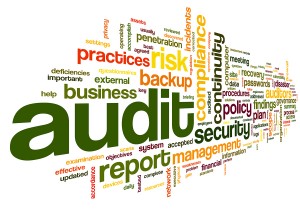 A report issued last year by the U.S. Department of Health & Human Services cited that 32 percent of the 644 home health agencies that were reviewed were noncompliant with face-to-face documentation requirements. In response, the Centers for Medicare & Medicaid Services (CMS) has decided to audit all home health agencies. Additionally, in 2013, the Centers for Medicare & Medicaid Services (CMS) uncovered $34.6 billion in improper overpayments to healthcare providers, as part of the U.S. government’s concerted effort to reduce waste in healthcare programs. In light of these two developments, every home health agency will be audited with increased scrutiny on the face-to-face encounter and improper payments.
A report issued last year by the U.S. Department of Health & Human Services cited that 32 percent of the 644 home health agencies that were reviewed were noncompliant with face-to-face documentation requirements. In response, the Centers for Medicare & Medicaid Services (CMS) has decided to audit all home health agencies. Additionally, in 2013, the Centers for Medicare & Medicaid Services (CMS) uncovered $34.6 billion in improper overpayments to healthcare providers, as part of the U.S. government’s concerted effort to reduce waste in healthcare programs. In light of these two developments, every home health agency will be audited with increased scrutiny on the face-to-face encounter and improper payments.
According to a federal government-run website, paymentaccuracy.gov, “Improper payments occur when: funds go to the wrong recipient: the right recipient receives the incorrect amount of funds (including overpayments and underpayments); documentation is not available to support a payment; or the recipient uses funds in an improper manner.”
While a small percentage of audits uncover fraud, the majority of audits reveal unintentional errors in claims preparation and processing. Agency staff members need to be well-versed in audit triggers and ways to proactively prepare for audits.
The following are five tips to help agencies avoid surprises that can negatively affect cash flow, tie up resources and damage reputation:
1. Understand the main audit triggers.
Auditors review claims documentation to identify discrepancies in four error categories:
• No documentation. The provider fails to comply with requests for medical records supporting the claim.
• Insufficient documentation. The medical documentation submitted is inadequate to support payment for the services billed.
• Medically unnecessary. Based on the medical records submitted the services billed were not medically necessary based upon Medicare coverage policies.
• Incorrect coding. The provider submits medical documentation supporting the service was performed by someone else.
2. Embed compliance procedures in daily work flow.
Audits of claims will be less disruptive to business operations if staff members are well-versed in CMS requirements. Staff should develop documentation procedures that align with CMS and follow them as part of their daily work flow. Adjustments can be made as lessons are leaned in the audit process. CMS offers resources on regulations and guidance at http://www.cms.gov.
3. Assess your agency.
Proactively monitor how well your agency is in compliance with Medicare and Medicaid requirements and how well your staff is serving patients. Conduct self-audits to identify coverage and coding errors before your agency is audited by a CMS contractor. The Office of Inspector General (OIG) has compliance guidelines that offer a framework for conducting a self-audit. See website: http://oig.hhs.gov/compliance/compliance-guidance/index.asp. Medicare-certified home health agencies serving 60 or more patients during the previous 12 months, must participate in Home Health Consumer Assessment of Healthcare Providers and Systems (HH CAHPS) surveys. However, voluntarily implementing HH CAHPS surveys can be helpful in identifying potential audit risk areas. Furthermore, the survey results can provide a holistic view of risk agency-wide by analyzing areas where quality of care is lagging.
4. Document correctly and electronically.
Patient medical records should be accessible electronically in an integrated software solution that manages all aspects of operations from patient referrals and charting to payroll and billing. Ensuring that medical records contain appropriate documentation can help protect against audit risk. Some examples of required documentation include:
• Physician certification/recertification of ‘confined to home’ status and the need for home health services.
• Face-to-face encounter. CMS’s proposed electronic and paper versions of its clinical documentation template can be used to assist physicians in documenting their home health face-to-face encounters.
• Therapy notes.
• Comprehensive assessment of the patient.
5. Prove that patient visits took place.
Unique to the home healthcare industry is that the clinician delivers services in the patient’s home. An electronic visit verification system enables clinicians to capture their GPS location along with date and time stamps when they check-in and check-out of the patient’s home, as well as record vital signs and take notes. This provides documented proof of where and when the service took place. Electronic visit verification is best captured through an app on a Smartphone or tablet that is integrated with the agency’s software solution.
As CMS audits continue to scrutinize the face-to-face documentation requirements and recoup overpayments to reduce costs, the best defense for a home healthcare agency is adoption of an automated, integrated software solution that manages every aspect of operations including electronic visit verification.
